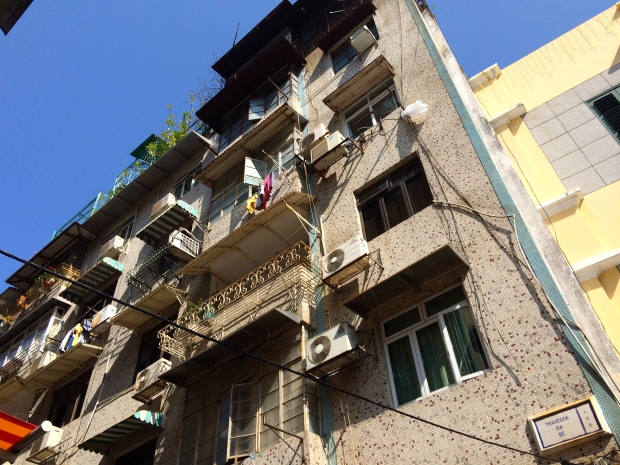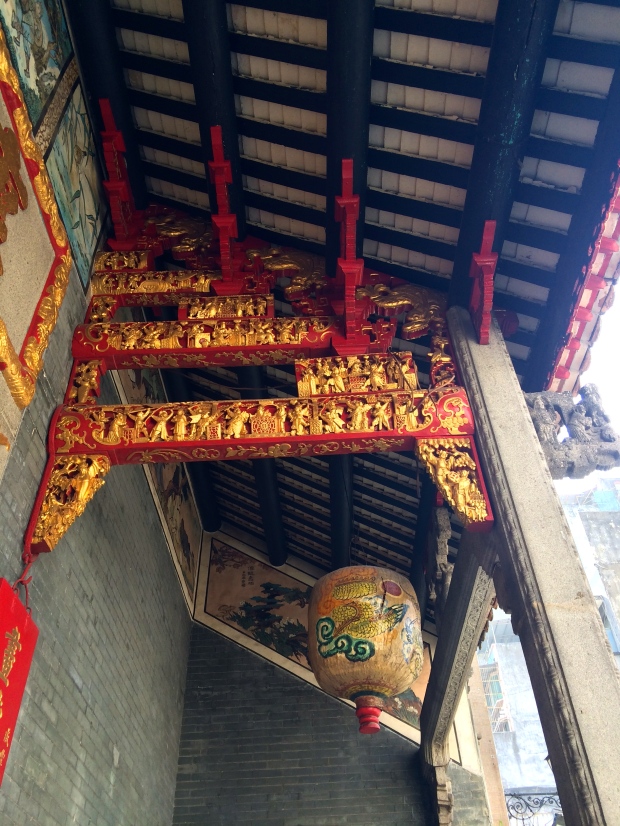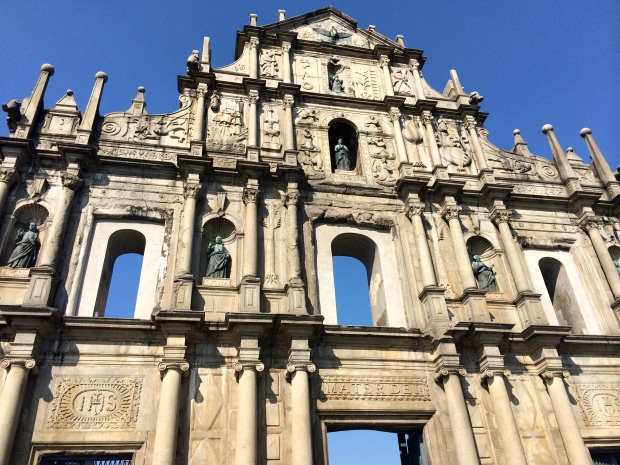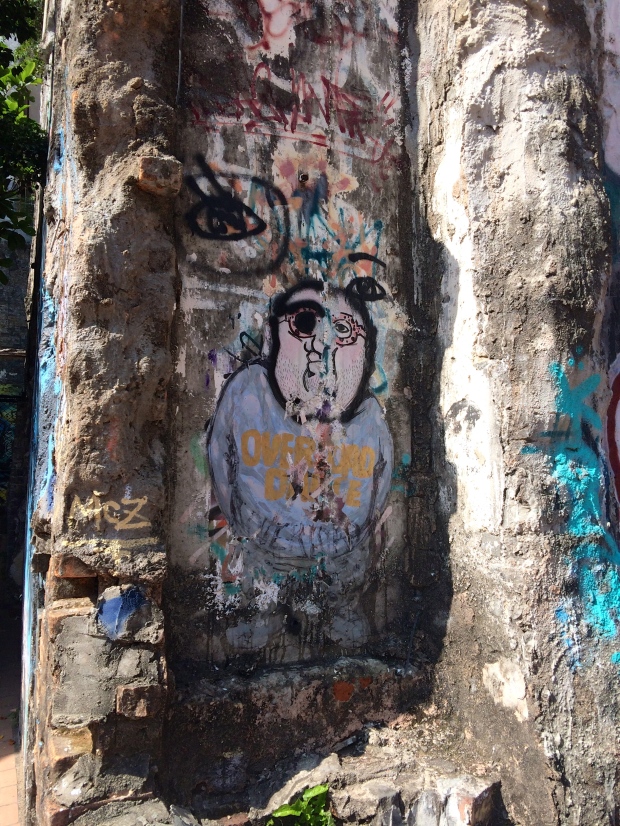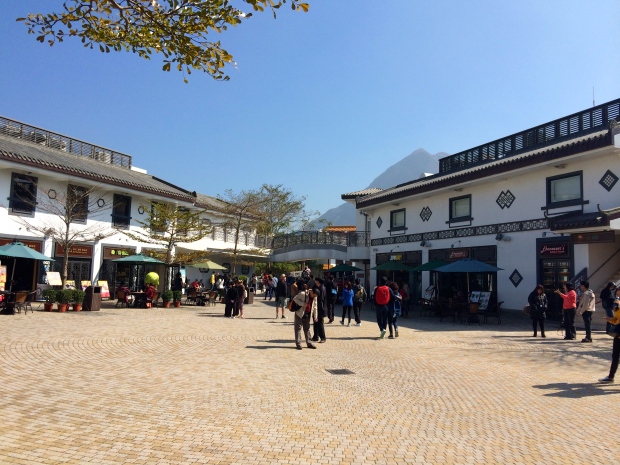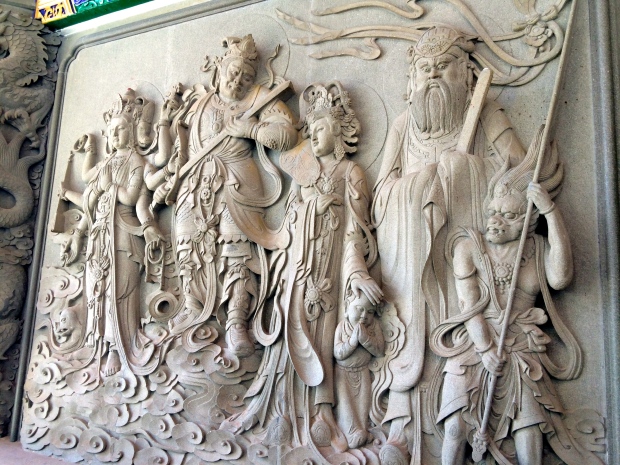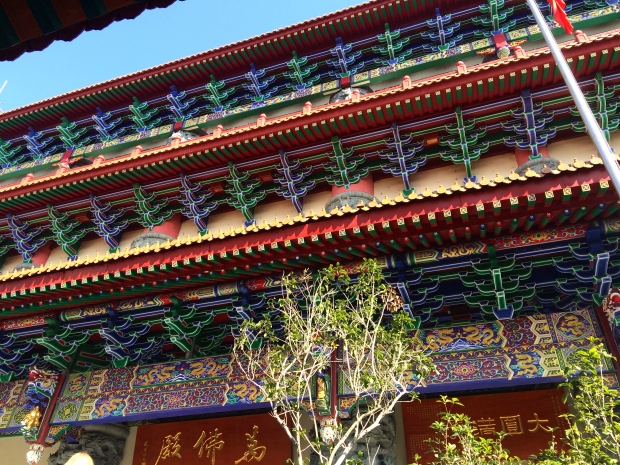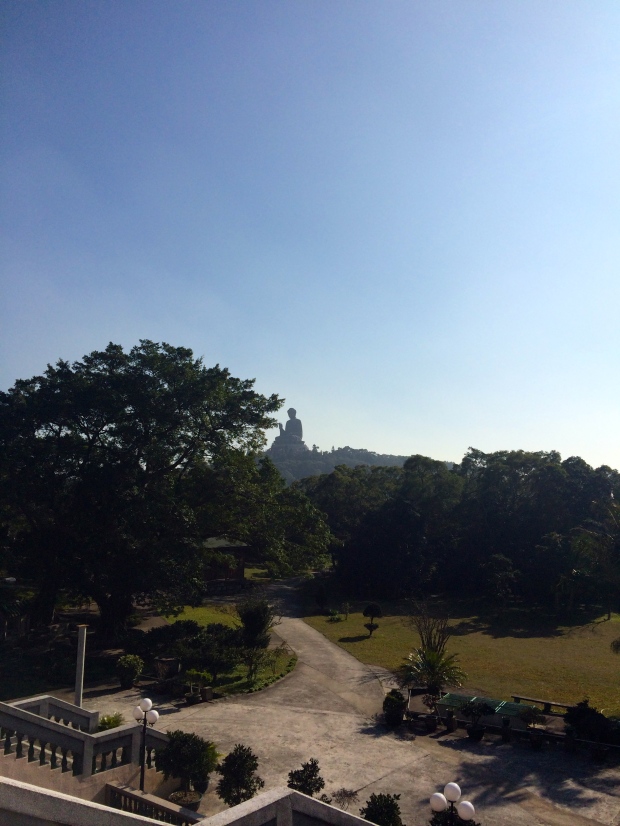First, couple things I forgot to mention in my last post (Hong Kong Holiday Part I):
-Including travel days, I was gone from January 12 – January 18 (6 days)
-The guidebook I used that proved to be extremely helpful was Fodor’s Hong Kong, with a Side Trip to Macau (2013). They also have an online travel guide, which you can check out by clicking here. Didn’t use their hotel or restaurant recommendations (we stayed in a hostel and ate whatever street food we chanced upon), but the maps, site seeing information, and Macau section were great.
Okay, back to the show!
“I mean, what’s the point of traveling if you’re not going to kill yourself from exhaustion. What kind of a vacation is that?!”
Kyla shot me a look, really?
I shared that musing in the middle of our Hong Kong adventure, I think during one of the (many, many) times we were lost, already exhausted and sore from walking around the main areas of Hong Kong city. The next half of our trip took us away from city center, and I think if we knew what was to come, we would have been wary to continue. So maybe it’s good that we can’t see into the future, but instead have to be satisfied with living in the present while having knowledge from the past. In this case, the gained knowledge we applied was our footwear. We threw our cute sandals back in the suitcases and swapped them for more practical, tourist-appropriate shoes.
Although, I hate calling myself a tourist. Kyla does too, she prefers to call herself a traveler.
A couple times we discussed what differences in meaning there are between tourist and traveler. We agreed that a tourist is a person who goes somewhere just to relax, to experience some new things but have someone else (like a tour guide or company) take care of the logistics. A traveler is someone who deals with every nitty-gritty detail; figures out public transportation, walks anywhere he/she possibly can, eats cheap local food, and goes to bed feeling like death because so much was squeezed into one day. But that’s a trivial distinction, isn’t it?
Count Gobineau had this to say about travel as he traversed the Middle East in the 1870s: “It is not everyone who knows how to travel…It is not everyone who can see beneath the surface of things, and read the significance of the changing background and novel scenes that meet his gaze, any more than it is given to everyone to interpret the inner meaning of a Beethoven sonata…”
A tourist takes his/her surroundings at surface-level, without questioning them, not even caring to see “beneath the surface of things.” But for a traveler, tuning into and honing that insight makes any time abroad (or away from home) worth the time, effort, and stress. Insisting that there is “more than meets the eye” and testing that hypothesis makes the adventure worthwhile.
Agree, disagree? I’m curious to know.
Okay, Hayley, enough with your silly philosophical musings. I want pictures.
True enough, folks, let’s jump into the third day of my Hong Kong trip!
Day 3 – Macau
First, I wanted to go to Macau just to add another stamp in my passport. Ugh, what a shallow reason, Hayley – and to admit that after your ridiculous ‘tourist vs. traveler’ rant!
But would you believe that neither Hong Kong nor Macau stamped our passports? No. Instead, it was “hold onto these little squares of paper that 1) identify you as a visitor, and 2) allow you leave when it’s time to move on.” Thanks, Hong Kong and Macau.
Second, I wanted to go to Macau because Portuguese and Cantonese are the official languages on the island. If such differing languages form an integral part of Macau, what other cross-cultural aspects could I witness? It turns out, a lot.
Fast Fact Macau History Lesson: 1) The island was initially settled by a couple different ethnic groups that migrated from modern-day mainland China. 2) The Portuguese, hellbent on gaining trading ports and routes, were the first documented Europeans to start relations with Macau. 3) By the early 1500s, Jesuit missionaries established cathedrals and schools on the island. 4) Macau is similar to Hong Kong in that it is semi-autonomous from China, so U.S. citizens do not need a visa for a stay under 30 days. 5) Macau is mainly known today as an “Asian Las Vegas.” Gambling, casinos, living the high life, etc. If that is why you want to go to Macau, you are not alone. But if it’s not, rest assured there are plenty of other things to keep you entertained!

We took a ferry there and back, about $25 dollars one-way. It’s also a very pleasant 1-hour trip with great views.
General Impressions
Between a hotel shuttle and a taxi, we got ourselves to Largo do Senado, one of the main tourist hubs and starting point for our adventuring. Basically, we just walked around, enjoying the unique characteristics of Macau and bumping into the main points of interest.
First, the street tile was awesome; don’t think I saw the same motif twice.
And the Portuguese-influenced architecture and themes — some moments I felt as though I were in Europe.

*Nerd Alert* Hear that? That’s my heart fluttering over the Portuguese architecture with Cantonese shop signs.
But with a simple turn of the head, I was transported back to China; like getting bitch-slapped by culture.
Cathedrals and Temples
Similar to Hong Kong, religious structures of all faiths seamlessly blended into the city, and we chanced upon several cathedrals and temples mere blocks apart. All exquisite.
First was St. Dominic’s Cathedral:

A separate wing of the cathedral is a dedicated museum, displaying artefacts from past services and priests (mainly from the 1800s). It’s free and definitely worth the 15 minute walk-through.

St. Dominic’s is located in the busiest public square on Macau. Muffled voices reached the sanctuary and provided hynotizing background noise as we walked through.
Not far was Sam Kai Vui Kun, or Kuan Tai Temple.
Back on the road. Kyla and I stopped mid-stride at the same time and looked up. “Wait — is this a temple?” Yep. So not knowing the name of this one, we ventured around it for a bit.
After hitting a main street and wading through a million other tourists/travelers, we came upon the Ruins of St. Paul. It is a formidable-looking facade, and reminded me of Celsus Library in Ephesus.
What you see is basically what remains of the original 16th century cathedral — the front. Information was spread throughout the court and crypt behind the facade, but basically what befell the cathedral was this: after being built as a cathedral with an adjoining school in the late 1500s, the Jesuits were expelled from Macau in the mid-1700s and St. Paul was shut down. It remained until 1835, when a fire (a cause was not stated) largely destroyed it, leaving what you see today. See how interesting history is!
After shopping nearby, we picked a direction and walked, eventually finding St. Anthony’s Cathedral.

In that moment it struck me that the candle and incense usage between temples and cathedrals really don’t differ that much.
 Our final religious spot was a Protestant church and accompanying cemetery, I guess everyone wanted a spot on Macau throughout the centuries…
Our final religious spot was a Protestant church and accompanying cemetery, I guess everyone wanted a spot on Macau throughout the centuries…
What I enjoyed most about this site was the cemetery.

Note the English. It was also interesting to see that most of these were young sailors and several came from the United States.
City and Nature
Like Hong Kong, I was struck with the balance between city and nature, between lush green trees and concrete infrastructure.

This was a busy place…especially with the groups of old men who walked and played board games together.
Graffiti
A pleasant surprise was the graffiti. I am of the opinion that, when done well and in appropriate areas, graffiti is a form of public art. If you think the opposite, at least give Macau’s art a chance:

“To my dear sweety: Thank you for this lovely year. Remind you something. No matter what, I’m always here with you.”

Another favorite. My imagination is not even this creative–so mad respect for people who can harness their creativity into a skill!
Did we get lost at any point during our Macau day? Of course. We had gotten lost each previous day, no way to escape it on Macau. Actually, there was a chunk of time (about two hours) where we just could not figure out where we were. Maps are great but it’s impossible for them to reveal everything. We wanted to make our way to the ferry dock before it got too dark, and it took much longer than we anticipated. It’s a wonder we didn’t kill each other. Came close a few times, though:
“Well Kyla, you wanted to walk down open streets with good lighting. And where did those f*cking open streets take us? Nowhere!!” I shrieked, adding crazed gestures.
“Oh don’t even, Hayley — you can’t navigate the area by our hostel worth sh*t…” (Which was totally true.)
If we had a camera crew follow us throughout our Hong Kong trip wanderings, the editing team would have to bleep out about a third of our dialogue. Don’t pretend the same wouldn’t happen to you…
Don’t worry, we made it back, albeit ready to die from exhaustion. Yet we also learned a lot that day — not just travel skills but things about each other. And as I grimaced over the pain from the blisters on my feet and hobbled around the hostel like an old woman, I realized that about half of my joy throughout the trip was brought about by Kyla’s presence. Luckily I had her for one more day…
Day 4 – Lantau Island
Basically the whole area called “Hong Kong” is made up of countless islands, so Hong Kong city is on Hong Kong island, but other Hong Kong sites are spread across those islands. Our final day together was dedicated to Lantau Island, also the base of Hong Kong’s International Airport.
Our Lantau Island adventure was all about the big Tian Tan Buddha, the largest seated Buddha in the world (I believe). We took the metro to one of its furthest points and hitched a ride on the Ngong Ping Skyrail, the only way to get to the Buddha. The skyrail was about $25 round-trip; well worth it.
Okay, here is a tip that will save you time and money: When you leave the skyrail area, the first thing you walk through is Ngong Ping village. There are a bunch of tempting restaurants, but they are pricy, like more than similar places in the city. We were stupid and didn’t bring snacks, so we ended up buying over-priced Subway sandwiches.
After emerging from the tourist trap, we started to see the good stuff.
After climbing about a million stairs, we ended up right under the huge statue.
Since there were also a million people swarming the Tian Tan Buddha, we quickly moved on to seek some quiet. After following a path that took us away from the noise, we found a sign for Wisdom Path:

“Maybe the path will make us wise as to what we’re supposed to do with our lives,” I glibly suggested.
On our way to this Wisdom Path, we passed a ghost town, what I assume used to be a tourist area but was replaced by Ngong Ping Village.
 Walked some more, and eventually hit the Wisdom Path. It turned out to be more striking than I imagined; verses of the Heart Sutra are etched in tall wooden pillars:
Walked some more, and eventually hit the Wisdom Path. It turned out to be more striking than I imagined; verses of the Heart Sutra are etched in tall wooden pillars:
We meandered down more trails, making several remarks that we’ll come back someday with proper hiking gear to better explore Lantau Island (yeah, seriously, I was talking about hiking). Our quiet solace slowly broke down as we got closer to the crowded area by the Buddha, and we decided to look through the Po Lin Monastery, which was extremely colorful:

Me, looking at the incense sticks: “I didn’t know they could get so big.” Kyla, snickering: “That’s what she said.” I couldn’t get angry at her, I totally walked into that one. 😛
I described a mosque as being “blingy” in this post, and I would describe Po Lin Monastery in the same way, and the interior was more flashy and striking (wasn’t allowed to take photos inside). And although it was beautiful and worth seeing, it definitely caters to orientalist expectations of what temples are “supposed” to look like.
To illustrate my point, check out this other temple, the Lotus Pond Temple. It’s on Lantau Island, about 10 minutes from the monastery, and marked with just one sign. We took a chance and ventured off the beaten path as we walked back to the skyrail.
 And with that, we ended our day on Lantau Island. Kyla took off for her 7am flight in the middle of the night, and I had to fend for myself the next day.
And with that, we ended our day on Lantau Island. Kyla took off for her 7am flight in the middle of the night, and I had to fend for myself the next day.
Day 5 – Solo Museum Outing
Really, it wasn’t bad fending for myself for a day. First, I enjoyed the views of Victoria Harbor:
I loved taking in all the sites, and aside from the crazy wind, it was a perfect day.
I visited the Art Museum and History Museum, which I think would’ve driven Kyla nuts if I forced her to come with me. The one sad thing about the Art Museum was that the Chinese Antiquities section was closed for renovation (or something). I honestly pouted like a child in front of the area blocked off from crazy visitors like me. But I had to get over it, and both museums (if that is your thing) are totally worth the visit and $1.30 USD admission fee.
I got myself to the airport with plenty of time before my 9:45pm flight, mentally preparing myself for my long journey home by eating Toblerone chocolate. A gentleman from the Hong Kong Tourism Board spotted me and asked if I could spare some time for a survey. “But of course.” He asked about my time and general impressions of Hong Kong (of which I gave glowing reviews), and it got funny when he asked where I was from.
“I’m from the United States.”
“Ah, very good, so which airport did you fly from?”
“I flew from Baku.”
“Wh-where?”
“Baku, Azerbaijan.” I tried to suppress giggles.
“Wh-where?”
So then I had to explain a little of why I’m in Baku, and he, like Lancer in my first post, eventually warmed up to the idea.
That seems appropriate, for reminders of Azerbaijan, the country that is my home for the greater part of a year, to act as bookends to my trip in Hong Kong. It was like Azerbaijan didn’t want me to forget about it, but how could I ever?
And how can I ever thank Kyla for not only spending money and time to see me, but for making it such a memorable experience?
Soulmate, thank you for being a permanent character in my movie, and for making Hong Kong be one hell of a scene!
Until next time… (:












